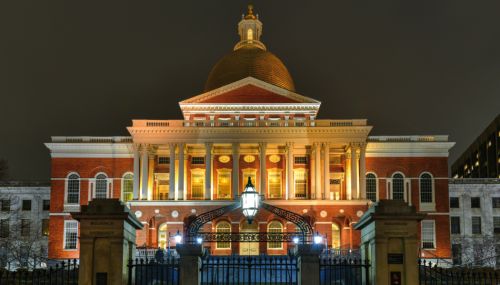All
Clearing the Air on Vermont’s AST Regulations

VFDA Executive Director Matt Cota explains the state’s updated oil tank regulations
New regulations are coming for owners of heating oil and kerosene storage tanks in Vermont, as well as for the fuel dealers who fill them. On July 20, lawmakers approved an update to the existing regulations on aboveground storage tanks. The update clarifies when a fuel dealer must red-tag a tank, requires all homeowners to have their tanks inspected at least once every three years, requires fuel dealers to retain copies of all inspection checklists and other records used to document tank compliance, and mandates a solid foundation under all tanks no later than 2030.
Heating fuel dealers in Vermont have encouraged homeowners to get their tanks inspected in advance of the regulations taking effect. This has resulted in nearly a dozen news reports on the new tank regulations. Most of these stories focused on red-tagging non-compliant tanks. However, red-tagging a non-compliant tank was already allowed under the law. “We’ve had a red-tag rule in place since 2011,” said Vermont Fuel Dealers Association Executive Director Matt Cota, who Oil & Energy contacted for clarification on the new regulation. “Fuel dealers have always been able to refuse to fill a tank that is non-compliant, and the state maintains an online database of non-compliant tanks,” Cota continued. “What’s new in the proposed regulations is a requirement for inspections and a clear set of criteria that compel a fuel dealer to refuse a fill.”
The regulations require fuel dealers to refuse to fill, or red-tag a tank, if it fails to meet basic safety standards. A fuel oil tank cannot be filled if it has leaks, drips, pitting, rust, dents, cracks or corrosion — or an un-sleeved copper fuel line below grade. The tank must also be on a stable foundation, have a working vent alarm, and the fill and vent pipes must have a minimum diameter of 1- inch.
The regulations also put requirements on homeowners to have a certified inspector examine their tank at least once every three years. Tanks must also be inspected after a new installation, after first fill of a new installation, and whenever a customer changes fuel distributors.
“While some homeowners are nervous about the inspection process, most heating fuel dealers already provide this service,” Cota explained. “The updated regulations are certainly raising awareness that Oilheat tanks should be examined by a professional to ensure they are working safely.”
Vermont is one of the more proactive states when it comes to tank regulations and spill remediation. The state maintains a Petroleum Cleanup Fund (PCF), which is paid for by a one-cent-per-gallon fee on sales of Oilheat, kerosene and dyed diesel in Vermont. About a third of the approximately $1.1 million raised by the fee pays for proactive measures, like helping homeowners remove, replace and upgrade old, leak-prone tanks. While there are only about 100 spills per year in Vermont (out of an estimated 150,000 fuel oil tanks), reducing the frequency of spills and the financial pressure on the fund was a goal of both the state of Vermont and the Vermont Fuel Dealers Association.
This regulation should deter tank spills by helping to ensure that the oldest, most at-risk tanks, or “the worst of the worst,” are brought up to code, Cota reasoned. “If we have fewer spills, there will be more money for proactive measures such as replacing non-compliant tanks.”
The new regulation has not been universally embraced by Oilheat dealers or consumers. “Some say it doesn’t go far enough; some say it goes too far,” Cota said. “There is a level of anxiety out there, which is why we are providing fuel companies with consumer education materials that help explain what the regulation is and why tank inspections are important. We have also trained several hundred tank inspectors with the NORA Tank Seminar, and we expect to train several hundred more.”
Indeed, Cota and many others in the heating industry recognize that tank inspection requirements can create valuable opportunities to become more closely engaged with customers and to enhance consumer perceptions regarding their fuel of choice. Additionally, dealers may have an opening to sell tank monitors and other services.
Asked if there’s a concern among dealers that customers will take this opportunity to switch to another fuel, Cota noted that only Hawaii has lower statewide natural gas penetration than Vermont. In addition, more than 80% of heating oil dealers in Vermont also sell propane and provide heating equipment services. “Vermont has many multi-fuel, full-service companies,” Cota said. “Though conversions are always a concern, the challenge facing an Oilheat dealer is similar to when their customer is updating their furnace or boiler and considering other fuel sources.
“On the other hand, if a customer has a shiny new tank in their basement, they’re more likely to stay with heating oil.”
Related Posts
 Jim Collura’s First Year as NEFI President and CEO
Jim Collura’s First Year as NEFI President and CEO
Posted on December 22, 2025
 NEFI-Backed National Energy Choice Legislation Advances
NEFI-Backed National Energy Choice Legislation Advances
Posted on December 22, 2025
 How Massachusetts’ Clean Heat Standard Could Transform Energy Dealer Economics
How Massachusetts’ Clean Heat Standard Could Transform Energy Dealer Economics
Posted on December 18, 2025
 Spotlight Sessions Illuminate Opportunities and Challenges
Spotlight Sessions Illuminate Opportunities and Challenges
Posted on September 19, 2025
Enter your email to receive important news and article updates.
